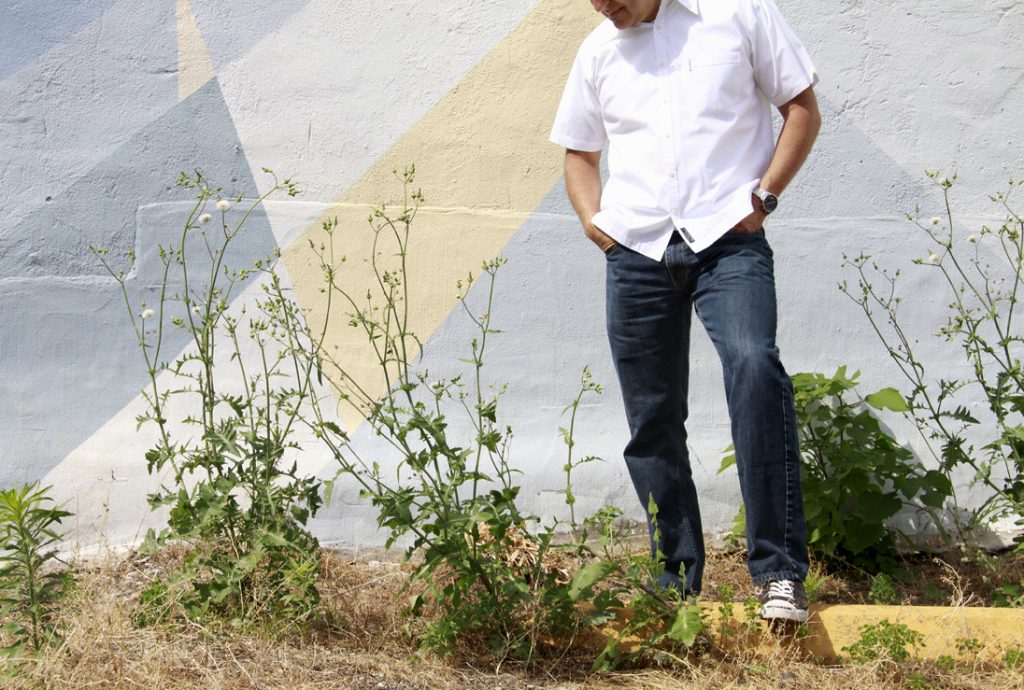
Garden Club of America Speaker Spotlight
The Garden Club of America will host David Rubin as a National Speaker in October
Speaker Spotlight: David Rubin, 2014 (Reproduced from GCAmerica.org)
 GCA (Louise Downey, Zone V Program Rep., Carrie T. Watson Garden Club): You were the 2011-12 recipient of the Rome Prize for Landscape Architecture. The experience you have described as “transformative”. Could you elaborate on this?
GCA (Louise Downey, Zone V Program Rep., Carrie T. Watson Garden Club): You were the 2011-12 recipient of the Rome Prize for Landscape Architecture. The experience you have described as “transformative”. Could you elaborate on this?
DR: One of the extraordinary features of becoming a prize winner is the exposure one has to an array of talented people from diverse fields in the Arts and Humanities. When you win the prize, you might believe your perspective on the world is broad. Actually, as you’ve been concentrating on your specific field of study, your view has become (quite unexpectedly) very narrow.
I entered the Academy as the youngest owner of one of the nation’s largest landscape architecture firms. My experiences in Rome prompted a fundamental shift in thinking, and I created my own studio focused on empathy-driven design and the creation of landscapes of social purpose and fine design. The studio, LAND COLLECTIVE, in its first year of practice has allowed me to work across the country on projects as diverse as academic environments, neighborhood vision plans, and new parks. This has been an extraordinarily transformative experience that keeps giving.
GCA: Please tell us about your way of thinking about design and your ambition to bring people together, referring to it as “the first sieve of design.”
DR: “The first sieve of design” is to consider how people will feel as a result of the environment we are creating. A successful space is one that’s well attended. If, after our design efforts, we have created a beautiful space but no one is in it, that space is deemed a failure. It is our hope that we can bring diverse groups together in an effort to create dialogue where they might not normally interact.
GCA: How did you make the jump from an undergraduate degree in Fine Art and the History of Art to Landscape Architecture? And how has the Liberal Arts education impacted your work?
DR: I was fortunate to attend a liberal arts college that required a broad selection of electives. The school, Connecticut College, encourages students to explore these diverse areas of study from the focus of their major. So I found myself writing papers for government class with titles like “Platonic Philosophy and the Art of the Kouroi”. As a result of visual learning (which was inherent in the Fine Arts), I was learning at an exponential rate and exploring multiple areas.
Landscape Architecture was a field that found me as much as I found it. My interests in social engagement and the design of public spaces were a result of an appreciation for art and my understanding of history, culture and the social sciences. Although the field of landscape architecture was new to me as a discipline, it seemed to value all of the ideals I found important in the world. My portfolio of work from Connecticut College allowed me entry into Harvard’s Graduate School of Design and the Masters in Landscape Architecture program. My parents insisted upon graduation that I also apply to law schools. While I was accepted, my emotional response to the world would have made me a horrible lawyer!
GCA: What is the significance of the name of your new firm LAND COLLECTIVE?
DR: The name LAND COLLECTIVE was created to describe the effort required to render landscape successfully. A landscape architect holds the information of every other consultant: civil engineers, building architects, lighting, signage and wayfinding, mechanical and electrical engineering. It is the landscape architect’s drawings that bring all of these disciplines together into a cohesive whole, and it is that collective consciousness that elevates landscape.
GCA: What connections and interactions have you had with GCA clubs and their members?
DR: I have a particularly fond connection with the Indianapolis Club with whom I have been engaged due to my work at Eskenazi Hospital and Campus. They were the first people to learn of the prize win, and upon my return, they were eager to hear of the experience.
It was a wonderful reunion.
GC A: Do you have a favorite project?
A: Do you have a favorite project?
DR: Every new project is my favorite project. Of those that I have had the honor of designing, I would cite Lenfest Plaza at the Pennsylvania Academy of the Fine Arts in Philadelphia, Canal Park in Washington, D.C., and Berkeley’s California Memorial Stadium Plaza. But of my current efforts, I am excited at the prospect of Grand Junction in Westfield, Indiana. This is LAND COLLECTIVE’s first project as prime, and we are excited about our collaboration with the City of Westfield and the consultants we have assembled. Stay tuned for something wonderful.